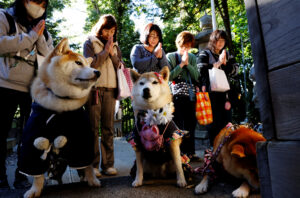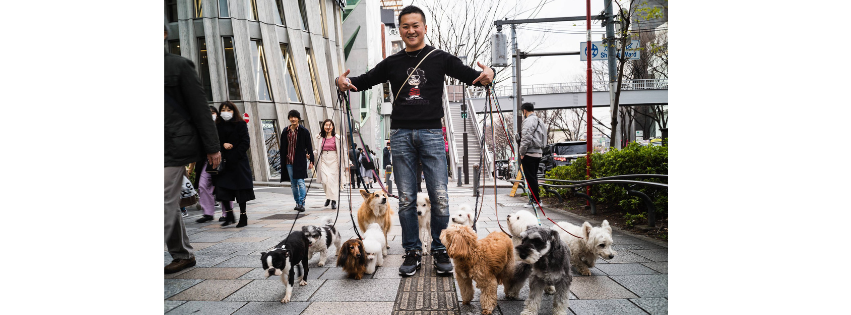No products in the cart.
Exploring Japan’s Dog Culture
Introduction:
Dogs have been a significant element of Japanese culture for centuries, serving roles ranging from hunting partners to cherished pets. This blog explores the deep history and distinctive features of dog culture in Japan, highlighting the enduring connection between people and their canine companions. As tradition and modern influences have shaped this relationship over the ages, Japan’s bond with dogs has left a lasting mark on its cultural heritage.
A Historical Connection:
The history of dogs in Japan is intertwined with the country’s cultural fabric. Dogs were not merely animals but esteemed companions and helpers to the people. In ancient times, they played crucial roles in hunting, guarding, and even as symbols of loyalty and protection. From the earliest known periods, such as the Jōmon period, archaeological findings reveal the presence of dogs in burial sites, suggesting their significance in the afterlife.
Cultural Depictions:
The Heian period marked a significant era in Japanese literature, characterized by the emergence of masterpieces like The Pillow Book and The Tale of Genji. These literary works provided insights into the daily lives of aristocrats, where dogs were depicted as ubiquitous companions. Whether lounging in the courtyards of grand estates or accompanying their owners on leisurely strolls, dogs were integral to the aristocratic lifestyle portrayed in these texts.
Traditional Practices:
Until the late 1800s, dogs played a crucial role in the training of nobility warriors through inuoumono, or “dog hunting events.” These events not only served as training exercises but also highlighted the bond between humans and dogs in traditional Japanese society. The warriors’ proficiency in handling dogs reflected their skill and discipline, essential qualities for success in battle. Through inuoumono, both humans and dogs honed their abilities, fostering a symbiotic relationship that transcended mere utility.

Modern-Day Adoration:
Today, the reverence for dogs in Japan continues, with advertisements and stories often portraying dogs with human-like qualities. From heartwarming commercials to captivating novels, dogs are depicted as intelligent, loyal, and emotionally expressive beings, resonating deeply with audiences. These portrayals not only reflect the enduring affection for dogs in Japanese society but also serve as a reminder of their unwavering companionship.
The Rise of Small-Sized Dogs:
The popularity of kawaii (cute) culture in Japan may influence people’s preferences for smaller, more adorable dogs. In a society where cuteness is highly valued and celebrated, it’s not uncommon for individuals to gravitate towards breeds that embody these qualities. Small-sized dogs with their charming features and endearing personalities often align perfectly with the aesthetics of kawaii culture, making them irresistible to many Japanese dog lovers. The convenience and ease of caring for small-sized dogs may appeal to busy city dwellers who seek companionship without the demands of larger breeds. In densely populated urban areas like Tokyo, where living spaces can be limited, smaller breeds are often more practical and manageable. They require less space, are easier to transport, and generally have lower maintenance needs compared to larger dogs
Conclusion:
Smaller dog breeds are well-suited for compact living spaces, making them perfect for apartment residents with limited room. Their small size helps them maneuver easily in tight areas, minimizing the chance of accidental damage or disruption. Additionally, smaller dogs are often favored by those with busy schedules because they generally need less exercise and adapt well to indoor living. This makes them ideal for city dwellers who may not have time for long outdoor walks. Overall, the convenience and ease of care associated with small dogs make them a popular choice for urban residents looking for a canine companion.









